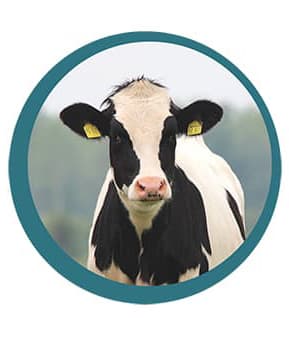- México, 33 Pol. Ind. Tecnoparc 43204 Reus (Tarragona) España
- +34 977 317 111
- bionte@bionte.com
Within the costs of livestock production, nutrition and animal health exceed 50% of the total costs. So much so, that ensuring the welfare and health of animals is considered an investment, since it leads to better reproduction and higher production.
This fact goes through the importance of controlling and preventing the existence of mycotoxins in animal feed, since the consumption of raw materials and contaminated animal feed directly affect animal health and, therefore, the food chain.

In general, poultry are very sensitive to mycotoxins, although the effect of these also depends on the species. For example, broiler chickens are not as affected by aflatoxin (immunosuppressive) contamination compared to other birds such as turkeys, geese and ducks.
For their part, type A trichothecenes such as T2 toxin, HT-2 toxin and diacetoxyscripenol are a constant concern for the industry because they cause heavy economic losses. And it is that these types of mycotoxins are very toxic for birds, especially for chickens, with consequences such as reduced feed intake, lower body weight, oral lesions and reduced quality of fertile eggs.
On the other hand, turkeys and chicks are very sensitive to ochratoxins, and can cause weight loss, poor growth and production of eggs with poor quality in their shell.
Regarding the fumonisins, they can cause the death of the animal in degrees of high contamination.

Pigs are the production animals most likely to be contaminated with mycotoxins.
In particular, aflatoxins are the type of mycotoxin that affects them the most, attacking their immune system and reducing their appetite.
The clinical manifestations in the animal depend on the degree of contamination. They can range from reduced growth to liver damage. They may also suffer vomit when intoxication levels are high.
Other classes of mycotoxins, such as ochratoxin A, cause kidney damage, weight loss, and poor growth.
For its part, zearalenone produces estrogenic effects and increases the occurrence of spontaneous abortions in pregnant sows.

Ruminants are also very sensitive to mycotoxin contamination. They can, for example, modify the ruminal microbiota.
Mycotoxins in ruminants can also alter their ruminal function reducing its motility before affecting the animal health.
They can be affected by aflatoxins, zearalenone and trichothecenes and, to a greater extent, young ruminants and monogastric animals.
These toxins particularly affect dairy cows. When these have been ingested, can reduce feed intake, provoke acute mastitis, weight loss and respiratory disorders. Mycotoxins can also produce immunosuppression, liver damage and, of course, reduced milk production.
For its part, the T-2 toxin causes them to lose weight and appetite, low milk production, poor growth and gastroenteritis. It is also associated with hemorrhagic bowel syndrome, since it is capable of altering immune function.
In ruminants, zearalenone alters reproductive processes and even causes spontaneous abortions.


The company that provides effective solutions against mycotoxins.
Calle México, 33. Polígono Industrial Tecnoparc.
43204 Reus (Tarragona) - España
Contact information
E-mail: bionte@bionte.com
Telephone: +34 977 317 111